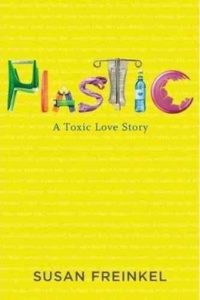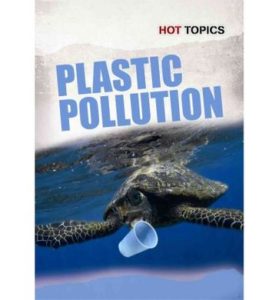HOT TOPIC – PLASTIC AND PLASTIC POLLUTION
CONTENTS
Global Perspectives and Action
Australian and Local Perspectives and Action
One World Centre Library Resources
LINKS TO THE UN SUSTAINABLE DEVELOPMENT GOALS
Plastic pollution is an urgent, global environmental challenge that is addressed in several of the UN Sustainable Development Goals. The most directly relevant goals are SDG 12 and SDG 14.
SDG12: Ensure sustainable consumption and production patterns
Relevant targets include –
By 2020, achieve the environmentally sound management of chemicals and all wastes throughout their life cycle, in accordance with agreed international frameworks, and significantly reduce their release to air, water and soil in order to minimise their adverse impacts on human health and the environment.
By 2030, substantially reduce waste generation through prevention, reduction, recycling and reuse.
By 2030, ensure that people everywhere have the relevant information and awareness for sustainable development and lifestyles in harmony with nature.
Develop and implement tools to monitor sustainable development impacts for sustainable tourism that creates jobs and promotes local culture and products.
For learning objectives, teaching methods and projects for SDG12 click HERE.
SDG 14: Conserve and sustainably use the oceans, seas and marine resources for sustainable development .
Relevant targets include:
By 2025, prevent and significantly reduce marine pollution of all kinds, in particular from land-based activities, including marine debris and nutrient pollution.
By 2020, sustainably manage and protect marine and coastal ecosystems to avoid significant adverse impacts, including by strengthening their resilience, and take action for their restoration in order to achieve healthy and productive oceans.
For learning objectives, teaching methods and projects for SDG14 click HERE
UN SDGs – World’s Largest Lesson Materials
Redesigning Plastic Packaging.
http://cdn.worldslargestlesson.globalgoals.org/2017/08/Redesigning-plastic-packaging_final.pdf
Suitable for secondary students
Life Below Water – Marine Litter
http://cdn.worldslargestlesson.globalgoals.org/2017/05/WED-Lewis-Pugh-Marine-Litter-Lesson-Plan-Final.pdf
Suitable for middle-upper primary students
GLOBAL PERSPECTIVES AND ACTION
UNEP
The United Nations Environment Program has a current focus on plastic pollution as a global environmental challenge. UNEP resources include:
“Our Planet Is Drowning in Plastic” interactive page
UNEP. The State of Plastic. World Environment Day Outlook. 2018. This is a brief (11 page) and accessible document addressing the need for urgent change to deal with the global problem of plastic pollution.
UNEP VIDEO: “Plastic Pollution: How Humans are Turning the World into Plastic” [10 min]
WWF – WORLD WILDLIFE FUND – AU
The WWF released a report (2019) on the global plastic pollution crisis. The report warns that unless there is a dramatic change of approach to the global plastics crisis an additional 104 million metric tons of plastic pollution could enter our ecosystems by 2030.
Further information and VIDEO summary available here: WWF Global Plastic Pollution Report
YUNGA is the Youth and United Nations Global Alliance.
Information for young people on plastic pollution is at “Where does your plastic waste go”
http://www.fao.org/yunga/news-and-events/detail/en/c/1117219/
Earth Day Network, Plastic Pollution Primer and Action Toolkit, 2018
This document includes information and links to additional resources* on plastic pollution designed to support young people to take action to combat the problem.
Calculate your plastic consumption with the Earth Day – Plastic Pollution Calculator.
A PLASTIC OCEAN
Educational Supplement for the film A Plastic Ocean, produced by the Plastic Oceans Foundation.
NATIONAL GEOGRAPHIC
VIDEO: PLASTICS 101
VIDEO: A Brief History of How Plastic Has Changed our World
PRACTICAL ACTION
“Plastics Challenge” material for teachers. Challenge and design based learning. Includes free download sheets, powerpoint, posters and links to video clips: https://practicalaction.org/plastics-challenge-teachers
Story of Stuff Projects’ pages on PLASTICS, outlining global action targetting plastic pollution. https://storyofstuff.org/plastics/
WORLD ECONOMIC FORUM – AGENDA
Article: Eric Beckman. “The World’s Plastic Problem in Numbers”, Agenda, 13 August 2018.
AUSTRALIAN AND LOCAL PERSPECTIVES AND ACTION
WASTE AUTHORITY WA: http://www.wasteauthority.wa.gov.au/
Waste Sorted Schools Program : Support for schools in waste avoidance and resource recovery
CONTAINERS FOR CHANGE – for Schools
Contains information about collecting and fund-raising for schools as well as links to resources and educational guides.
ABC WAR ON WASTE
Education Resources related to the ABC’s “War on Waste” are available through the SEARCH function on the ABC Education webpage
https://www.abc.net.au/education
ASIA EDUCATION FOUNDATION – CURRICULUM RESOURCES
“Reduce, reuse, recycle, compost” – Lesson plans for year 6 – Indonesian Language focus
In this unit students compare Australian and Indonesian waste management strategies and create a promotional campaign. The learning sequence examines the waste management strategies of reducing, reusing, recycling and composting.
Unit 13. “Waste not Want Not” from Australian Association for Environmental Education and Planet Ark. Activities for lower, middle and upper primary. https://recyclingnearyou.com.au/documents/Unit13.pdf
Factsheets and other materials on waste and recycling are available at https://recyclingnearyou.com.au/education/
Search “Plastic” on the WWF Australia page for current material.
COOL AUSTRALIA Curriculum Materials
Activity: Blue: Ocean Guardians Preventing Plastic Pollution – Social Action – Year 5 & 6. Download from Cool Australia: https://www.coolaustralia.org/activity/blue-ocean-guardians-preventing-plastic-pollution-social-action-year-5-6/
“Quick summary: In this Social Action lesson, students will view the ‘Plastic Addiction’ clip from Blue The Film and consider the impact that plastic has on the ocean as well as ocean and shore-dwelling creatures. Students will research and discover options to reduce plastic waste and improve the health of our oceans. Students will brainstorm how people can make small changes in their everyday lives to reduce plastic use, then inspire their school community to reduce their plastic footprint in a public presentation of their ideas.”
ONE WORLD CENTRE LIBRARY RESOURCES
ADDITIONAL RESOURCES



